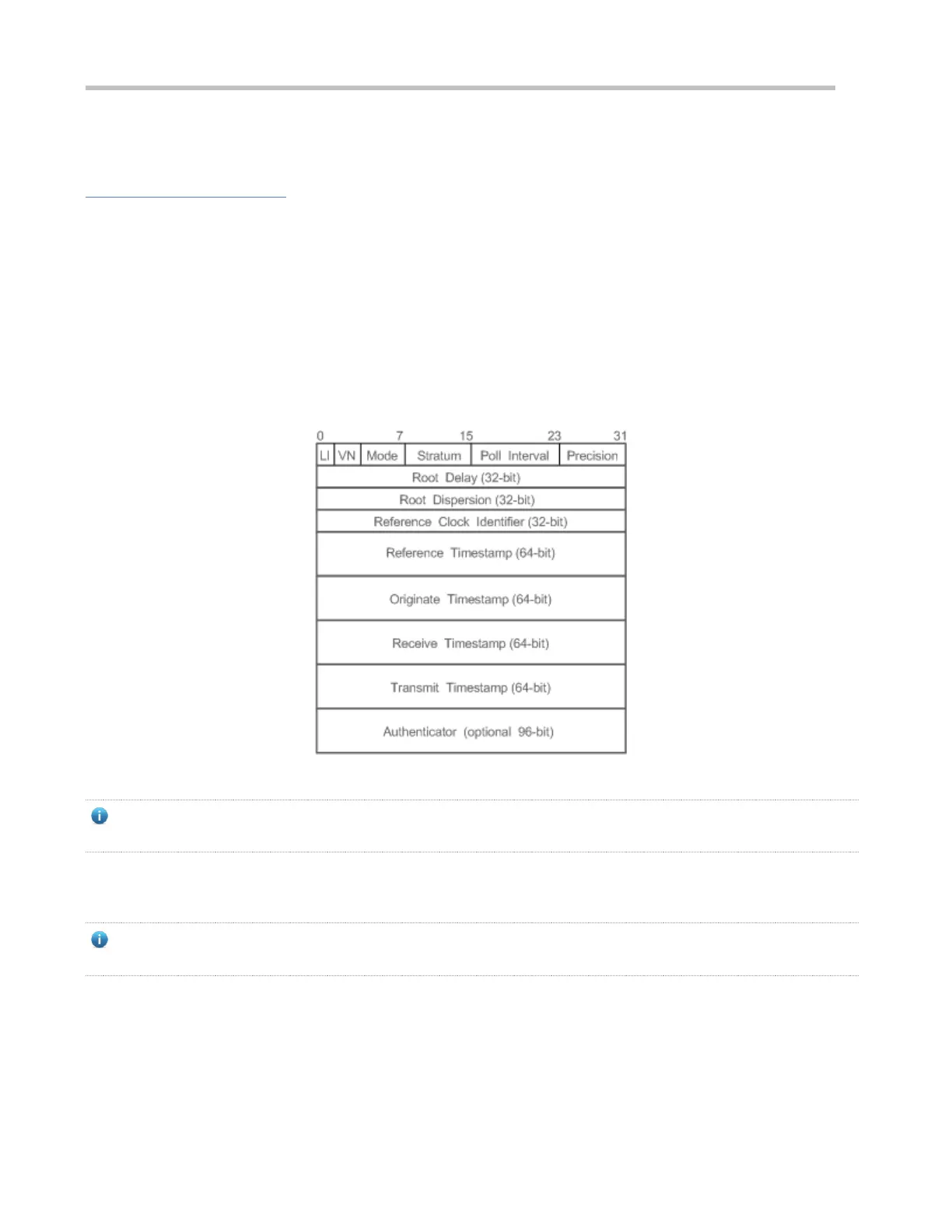Configuration Guide Configuring SNTP
14.3 Features
Basic Concepts
SNTP Packet
SNTPV4 is developed from NTP, which is intended to simplify the functions of NTP. It does not change the NTP specifications and the
original implementation of NTP. The message format of SNTPV4 is the same as that of NTP defined in RFC1305, with only some data
fields initialized into preset values.
As defined in RFC1305, SNTP uses User Datagram Protocol (UDP) packets for transmission and the used UDP port ID is 123.
Figure 14-2 shows the format of an SNTP time synchronization packet.
Figure 14-2 Format of an SNTP Time Synchronization Packet
Leap Indicator(LI): indicates a 2-bit leap second indicator.
00: indicates no warning information; 01: indicates that there are 61 seconds in the previous minute; 10: indicates that there are 59
seconds in the previous minute; 11: indicates that the clock is not synchronized.
Version Number(VN): indicates a 3-bit NTP/SNTP version number. The current version number is 3.
Mode: indicates a 3-bit SNTP/NTP working mode.
0: indicates no definition; 1: indicates symmetric active; 2: indicates symmetric passive; 3: indicates a client; 4: indicates a server;
5: indicates broadcasting; 6: indicates control information; 7: reserved.
Stratum: indicates the 8-bit stratum of a local clock. 0: indicates no definition; 1: indicates the master clock reference source; other
values: indicate slave clock reference sources.
Poll Interval: indicates the poll interval (seconds), which is a 8-bit integer.
Precision: indicates the time precision (seconds) of a local clock, which is a 8-bit integer.

